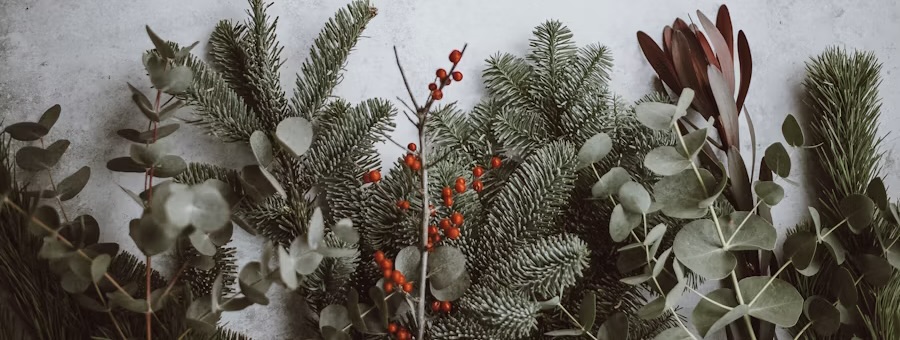The holidays are a time to gather with loved ones for light, food, and community. While holiday traditions look different around the world, they all celebrate joy, hope, and connection. Let’s explore some fascinating holiday customs!
Global holiday traditions
Germany: Advent calendars and Christmas markets
Advent calendars began in Germany in the early 1800s. I loved using one as a child and have shared them with my kids over the years. Germany also offers incredible Christmas markets. Each year, we visit a nearby market to see crafts, ice skate (for the more athletic among us), and indulge in delicious food. If you can, check out one in your area!
Mexico: Las Posadas
Las Posadas is a Mexican festival held December 16–24 that honors Mary and Joseph’s search for shelter before Jesus’ birth. Communities hold nightly processions, sometimes with a donkey, singing and asking for lodging. One home hosts a party each night, featuring music, dancing, prayer, and food. Children enjoy star-shaped piñatas, and the festival ends with a midnight Nativity mass. While festive, Las Posadas is deeply religious and emphasizes prayer, generosity, and community.
Philippines: Giant Lantern Festival
The Giant Lantern Festival, or Ligligan Parul, began with simple parol (lantern) displays during Simbang Gabi night masses. Over time, it evolved into a competition highlighting the artistry of Kapampangan villages. Huge, colorful lanterns symbolize light overcoming darkness, joy, and shared hope. Music, performances, and the lively contest celebrate Filipino creativity, faith, and pride.
Sweden: Saint Lucia Day processions
From the Philippines, we move north to Sweden, where Saint Lucia Day (December 13) brings light and hope during winter’s darkest days. Each town chooses a St. Lucia to lead a procession of children in white costumes with lighted wreaths. Families celebrate at home with coffee, saffron buns (lussekatter), and ginger biscuits.
Iceland: the yule lads
In Iceland, Christmas blends cheer with folklore. Thirteen yule lads arrive from December 11 to 24 to play tricks and leave gifts in shoes, but potatoes for the naughty. (Potatoes! How fun!) Rooted in centuries-old tales, these figures delight children and adults alike with playful antics.
Food that brings people together
Food is a central part of many holiday celebrations, bringing families together to share tradition and warmth.
Italy: feast of the seven fishes
The feast of the seven fishes is an Italian-American Christmas Eve tradition featuring seven seafood dishes, likely tied to Catholic abstinence from meat. Its origins are unclear, but early 20th-century immigrants popularized it to honor flavors from home. Menus vary, but baccalà and calamari are staples. The feast blends nostalgia, faith, and family joy.
Japan: KFC tradition
In Japan, Christmas is mostly secular. KFC became a holiday staple after a 1974 campaign showed families enjoying fried chicken at Christmas. Today, sharing a “party barrel” of KFC is a beloved way to celebrate. My family has always ordered pizza on Christmas Eve. Simple, easy, and delicious!
France: yule log cake
The bûche de Noël (yule log cake) has roots in ancient pagan winter-solstice rituals. Families once burned a log in the fireplace for protection, abundance, and continuity between generations. Today, the cake, designed to resemble a log, preserves that spirit and is a festive centerpiece.
Would you like to try making a yule log cake? I found this well-reviewed recipe. Maybe you’ll end up with a new holiday tradition!
Poland: Christmas Eve Wigilia supper
In Poland, Christmas Eve is celebrated with Wigilia, a meal of twelve dishes representing the disciples, months of the year, and good fortune. An empty seat welcomes an unexpected guest. The meal often features beet borscht, mushroom soup, carp, herring, pierogies, and stuffed cabbage. Desserts include kutia, piernik gingerbread, or cheesecake. Some families adapt the menu today, since preparing twelve elaborate dishes can be quite the undertaking.
Unique customs and symbols
Ukraine: spider web ornaments
In Ukraine, a popular Christmas tale tells of a poor mother who had nothing to decorate her children’s tree. That night, a spider spun delicate webs across its branches. When the sun rose, the webs glistened like silver, delighting the family. Since then, spider webs on a Christmas tree are seen as a sign of happiness and good luck.
Norway: hiding brooms
In Norway, Christmas Eve (Julaften) is the main celebration, with families gathering for a festive meal, carols, and gift-giving. One old tradition is to hide all the brooms in the house. Long ago, people believed witches and spirits came out on Christmas Eve to steal brooms for riding, so tucking them away was a way to keep the mischief at bay.
India: star-shaped lanterns
Christians in India create star-shaped paper lanterns at Christmastime to symbolize God’s light for the world. If you’re interested in crafting your own, follow the guidelines provided here.
Holiday traditions beyond Christmas
Hanukkah: menorah lighting and foods
Hanukkah, the Festival of Lights, is an eight-day celebration that remembers an ancient miracle and the triumph of light over darkness. It recalls the time when a small amount of oil, found in the rededicated temple in Jerusalem, lasted eight nights instead of one. To honor this, families light candles in a menorah each evening, adding more until they all shine brightly. Blessings, songs, and fried foods like latkes and sufganiyot are part of the joy, along with dreidel games and small gifts. At its heart, Hanukkah celebrates resilience, tradition, and the warmth of family togetherness.
Kwanzaa: focus on principles of unity and creativity
Kwanzaa is a weeklong holiday celebrated from December 26 to January 1 that honors African heritage, family, and community. Created in 1966 by Maulana Karenga, Kwanzaa highlights seven principles such as unity, purpose, and creativity. Families light candles in a kinara each night and talk about the day’s principle, while symbols like fruits, corn, and a communal cup remind participants of shared values. Traditions include wearing African-inspired clothing, enjoying music and storytelling, and ending the week with a joyful community feast called the karamu. Kwanzaa is a time to celebrate culture, togetherness, and hope for the future.
New Year’s Eve: 12 grapes in Spain, fireworks in Australia, first-footing in Scotland
In Spain, New Year’s Eve brings a tasty tradition: eating twelve grapes at midnight, one for each chime of the clock. Each grape represents a wish for the months ahead, and finishing all twelve as the clock chimes is said to bring prosperity. Across the world in Australia, New Year’s Eve shines with dazzling fireworks. Cities like Sydney are famous for spectacular displays over the Harbour Bridge, while councils across the country host shows that light up the night sky. Scotland keeps to an older custom called “first-footing,” where the first visitor after midnight is thought to shape the year’s fortune. Traditionally, a dark-haired man brings gifts like coal, bread, or whisky, symbolizing warmth, prosperity, and cheer.

What are some holiday traditions you enjoy every year?
Please let me know what your favorites are in the comments! The most important part of the holidays is spending time with loved ones. We always try to get a family photo, although we don’t wear matching pajamas. 🙂 There are some holiday movies we like to watch each year, such as A Christmas Carol and The Year Without a Santa Claus. I also like to watch Elf. When our kids were younger, we would often decorate gingerbread houses. So many fun memories.
Wrap-up
Exploring holiday traditions from around the world reminds us how much joy, creativity, and connection we share, even when our customs look different. Have you found a new tradition you’d like to try this season?
Other seasonal posts:
- Advent study: light in the margins
- homemade holiday gift ideas: simple treats and crafts to share this season
- cozy calendar: fun fall checklist
- the best holiday romance books for comfy and cozy reading
- gratitude practices
Other posts you may like:
- Cilka’s Journey by Heather Morris: five stars!
- visio divina: a practice of sacred seeing
- cultivate compassion
- author Kristin Harmel: captivating historical fiction
- women in the Bible: lessons on faith and courage
- praying for your community: a prayer “walk” around town
- 4 best devotional books: grounded and growing
- Lady Clementine by Marie Benedict: five stars!
- Proverbs 31: shared flourishing
- ninja creami sorbet excellence
- mug cheesecake: a sweet treat you don’t have to share
- wells of wisdom: exploring the metaphor of water in the Bible
- cultivate hope: a biblical perspective
Fondly,
Crysti



Thank you for the interesting information about holiday traditions around the world. The “Yule lads” idea in Iceland is one I had never heard of before. Since I like potatoes, I guess there wouldn’t be much incentive for me to be good!😀
I hadn’t heard of them either! Something tells me you’re *usually* pretty good!
I really enjoyed learning about all these fun holiday traditions from around the world. Our community in Ohio is very rooted in Italian heritage and the feast of the seven fishes is quite popular. Many restaurants offer this option as take out for families to enjoy on Christmas Eve. Our tradition is my moms spaghetti and on my husbands side is Italian wedding soup on Christmas Eve.
Thanks, Debbie! Spaghetti and soup sound wonderful!
I’m always fascinated by holiday traditions around the world so loved finding out many more here. Did you know in Portugal they eat a dish of Potatoes and Cod and Cabbage for Christmas and it’s called Bacalhau com todos?
I did not know that, Lee–thanks for sharing! So interesting!